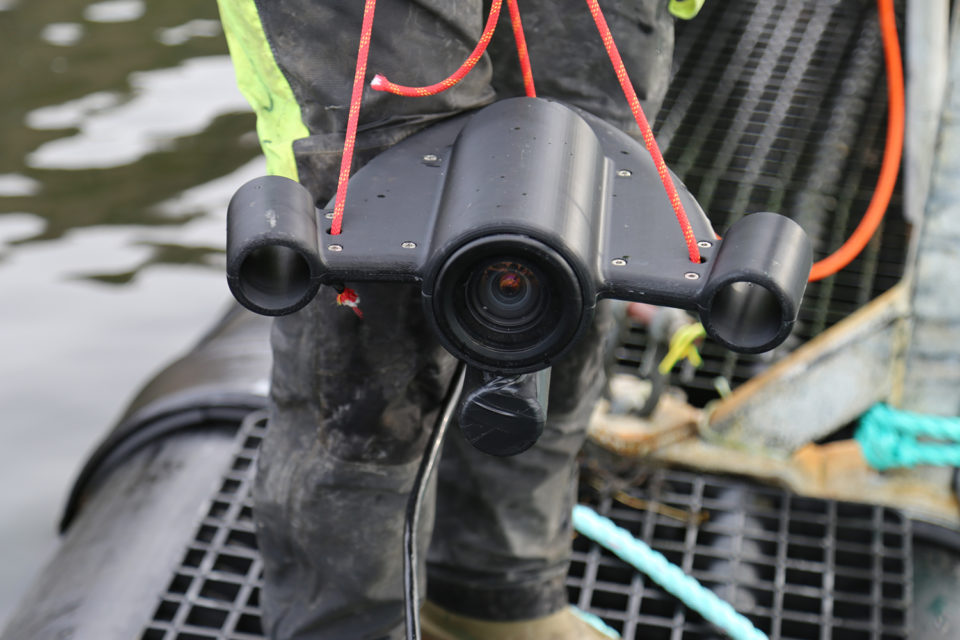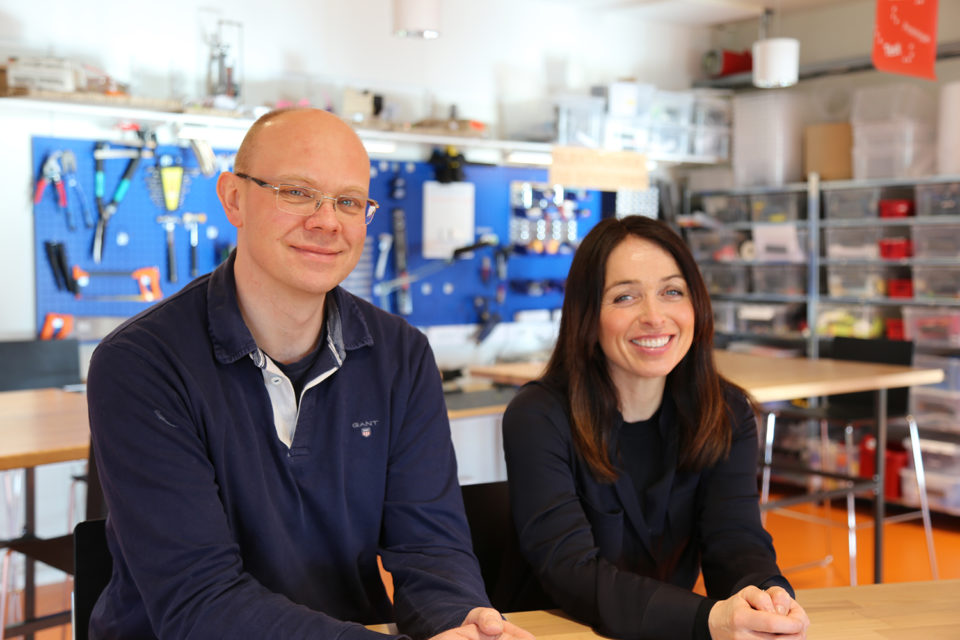Pipeline innovations seek to detect sea lice, trap them or prevent attachment

Innovative solutions to combat the effects of sea lice on the salmon industry are in the pipeline as ambitious new companies employ a combination of innovative technological and scientific methods to increase both data for farmers and resistance to lice for the fish themselves.
The parasite Lepeophtheirus salmonis has a costly toll on the industry. The Norwegian seafood research institute Nofima estimates sea lice costs the Norwegian industry NOK 4.5 billion a year – and that’s without accounting for reduced harvest weights. To date treatment efforts have been reactive, such as chemical baths and jet sprays for infected salmon, and cleaner fish like lumpfish and wrasse that eat lice attached to salmon.
“Our goal is to address the problem before it happens, in an environmentally friendly way,” Lars-Kristian Opstad, COO of Norwegian company Blue Lice, told the Advocate. His company has developed a trap called Capture & Contain which attracts sea lice before they find their host.
“Our device is like a water-based fly or mosquito trap for sea lice, but with technology that creates value for farmers and increases fish health,” he said. The trap is placed inside a cage and attracts the sea lice as they are looking for a host by sending out signals. Once contained in the trap, the sea lice are automatically pumped awayout of the tank.
In Norway alone 20 percent of the salmon die in their pens before reaching harvesting age, primarily due to sea lice and inefficient monitoring of fish welfare. This equates to 1 billion portions of fish valued at over $1.5 billion.
Blue Lice recently completed pilot tests with Norwegian farmers and hopes to bring the product to market later this year on either a purchase or rental basis. The size of an individual site will dictate how many traps are necessary, and each trap will require cleaning and maintenance, Opstad said. The cost of the trap is also yet to be determined, but its potential benefits could be far-reaching.
“With our traps we can capture the lice and avoid the costly expenses incurred by treating infected salmon,” he said. “But our technology will also reveal data from the capture, such as where the lice is coming from and when. Farmers can use this to make predictive trends about when attacks are most likely.” Opstad said data from the trap, connected to an app accessible on a mobile phone or computer, will enable farmers to control and check the status of their equipment.
Another Norwegian company, CreateView, intends to launch its camera and sensor technology in January 2020. The device won’t solve the sea lice problem but will generate data that’s been previously unavailable, said Liv-Hege Seglsten, CEO and managing director.
“Our sensors are placed underwater and as fish swim past they detect sea lice, injuries, disease and irregular behavior. This allows farmers to identify problems at very early stages and to seek treatment methods that are least harmful to the fish and the environment,” she said.

The sensors will send data to an app-based dashboard through which farmers can gain an understanding of the challenge – be it sea lice, deformities, weight, temperature, salinity, oxygen or ocean currents – and take appropriate action. In 2020 the company plans to add biomass measuring to its technology, which would give operators an even greater sense of the sea lice threat and of their own inventory. While the camera and sensor won’t monitor every individual fish, it will make it easier for farmers gather reliable statistics on fish welfare.
The device will be leased to farmers who will pay for access to the data and trends on their fish. For the pilot, participants paid NOK 50,000 for the sensor and NOK 12,000 per month for data with contracts a minimum of six months duration.
“What’s important is not actually the technology but the business model,” Seglsten said. “We involve fish health researchers and work closely with them and the fish farmer to take the data and conduct research programs that will yield new information. No one else is doing it like this – most other companies develop a technology and sell it to the market. We’re trying to solve the problems for fish farmers.”
The sensor will give farmers early warning about sea lice, so they can take action earlier. It will also prevent stress on the fish incurred when sea lice are counted.
“That’s when the fish die, as a result of that stress,” she said. “In Norway alone 20 percent of the salmon die in their pens before reaching harvesting age, primarily due to sea lice and inefficient monitoring of fish welfare. This equates to 1 billion portions of fish valued at over USD $1.5 billion.”
At Prospective Research, Inc. in Beverly, Mass., USA, founders Dakota Hamill and Jake Cotter are determined to control pathogen outbreaks like sea lice with bacteria. The two chemists started the company with $2,000 in a basement laboratory in 2015. After returning from the Hatch Blue accelerator program in early 2019 they raised $1.7million.
The pair believe that the only thing more adaptable than sea lice – which are becoming resistant to drugs and other treatments – are bacteria.
“Bacteria are the answer as they’re the only thing that can evolve faster than sea lice,” Hamill said. “If you can control the behavior of bacteria in their natural environment, you could turn the microbiome of every living organism into a pharmacy.”
Their goal is to utilize bacteria naturally present in the environment, seed them back into the gut of salmon via feed in greater numbers, and stimulate the production of natural bio-active compounds within the fish using their ability to communicate with the bacteria.
“The microbes are the production plant, their DNA are the blueprints, and our technology is the start command,” he explained. “Our focus is on prevention over treatment, as prevention is precautionary; treatment is reactionary.”
To date the company is examining a few strains, one of which has shown initial promise in being able to paralyze sea lice in vitro.
“Whether it would do the same in a live animal trial is unknown, so we’re at least 12 months away from having solid data,” Hamill said. “Right now, we’re still looking for bacteria with the right properties, and we have many more in vitro tests to conduct before we move onto live salmon trials. But our biggest challenge is finding partners to do more trials with, and it seems like Norway is the place to do this, without a doubt.”
Follow the Advocate on Twitter @GAA_Advocate
Now that you've finished reading the article ...
… we hope you’ll consider supporting our mission to document the evolution of the global aquaculture industry and share our vast network of contributors’ expansive knowledge every week.
By becoming a Global Seafood Alliance member, you’re ensuring that all of the pre-competitive work we do through member benefits, resources and events can continue. Individual membership costs just $50 a year. GSA individual and corporate members receive complimentary access to a series of GOAL virtual events beginning in April. Join now.
Not a GSA member? Join us.
Author
-

Lauren Kramer
Vancouver-based correspondent Lauren Kramer has written about the seafood industry for the past 15 years.
Tagged With
Related Posts

Health & Welfare
Animal health giants have sea lice in their crosshairs
Alltech and Benchmark have been working on the next generation of sea lice solutions and believe they have new products that can help salmon farmers win.

Health & Welfare
BC salmon farmers vow sea lice transparency
At the recent GOAL conference, the British Columbia Salmon Farmers Association committed to reveal sea lice counts at farms operating in the province while promising a future without antibiotics, despite struggles with the persistent yellow mouth disease.

Health & Welfare
Chem-free fixes emerging in sea lice saga
Salmon farmers, using emerging technologies, are exploring new methods of sea lice mitigation in an effort to overcome one of the industry’s most persistent problems. New chemical-free innovations show an industry eager to adapt and adopt environmentally safe practices.

Innovation & Investment
Aquaculture Exchange: Sebastian Belle
The executive director of the Maine Aquaculture Association talks to the Advocate about the diverse and growing industry in his state (oysters, mussels, kelp, eels and salmon) and how aquaculture should be used as a rural development tool.

